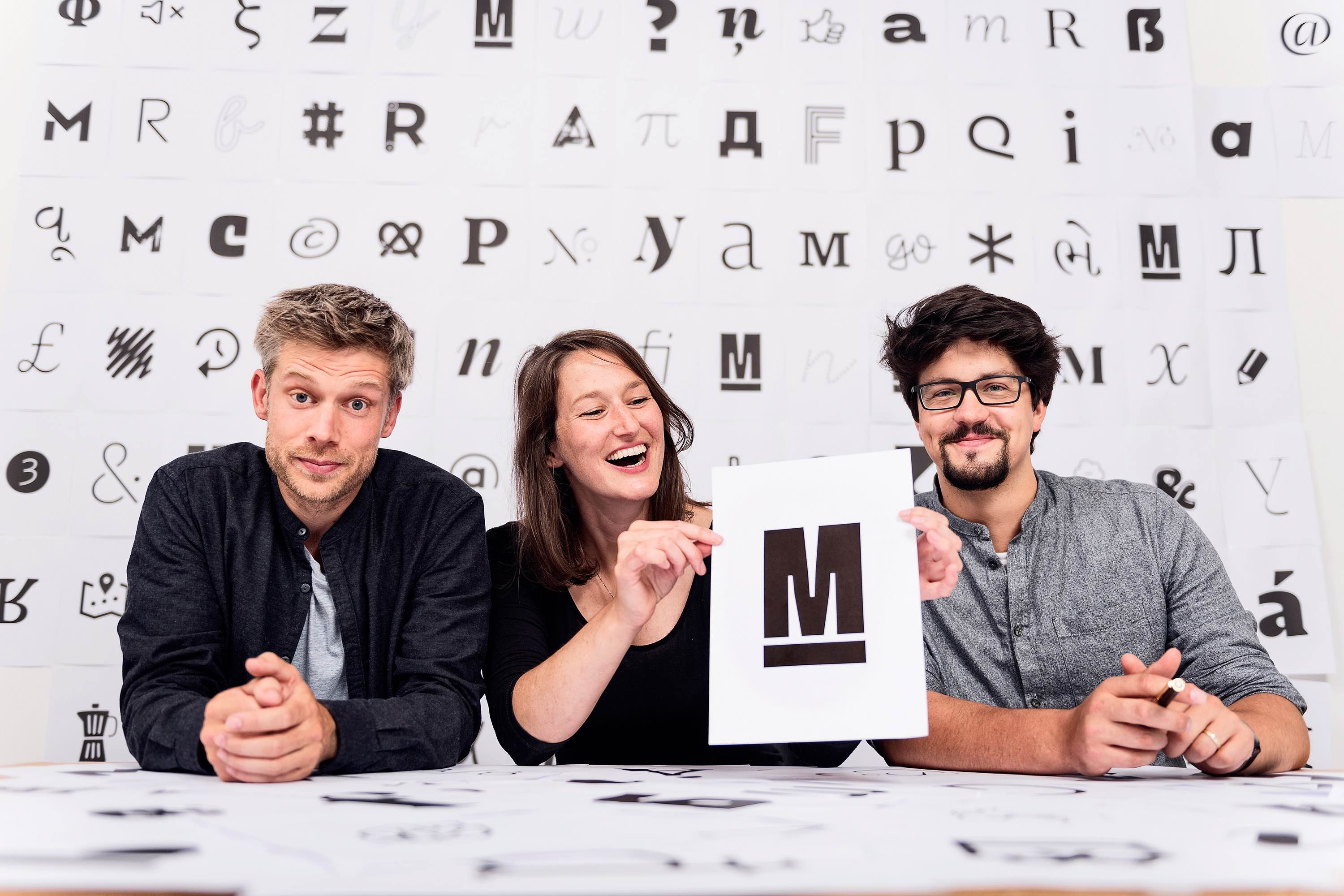Stefán Kjartansson is a graphic designer, illustrator, and typographer who lives to create. He’s been working in the design field for more than 25 years and co-founded the design agency, Armchair Media, recently acquired by IfThen, which won just about every major interactive design award that’s out there.
Stefán illustrated children’s books before transitioning to graphic design. In the early days before his career really took off, money was tight – unable to purchase typefaces, he started crafting fonts for his own projects. Eventually, Stefán began releasing typefaces for the retail market. His work tends to be unique, often challenging the status quo by breaking some of the typical “rules” of typography.
Although he doesn’t work as a type designer full time, it’s a creative avenue he remains passionate about to this day. He prefers to draw letters from scratch whenever he’s working on a logo project. “This is where many of my typefaces originate,” Stefán told us. “I get sidetracked into transforming those letters into an alphabet.”
Many of those designs will ultimately end up in his “graveyard folder,” but occasionally one of them will awaken him from a dead sleep in the middle of the night, filling him with “an inspirational panic.” When this happens, “I pull out a laptop and roll into a fetus position,” Stefán said. “I stay in this position for months, uptight over every detail.”
That isn’t to say the creation process is always fluid. Because he doesn’t work as a full-time type designer “I have to jump start the process engine with every new typeface,” he explained. This usually means calling on select “snipers” – type design friends and associates that he can rely on for assistance. He mentioned that YouTube is also a great resource for typographers because typography videos tend to feature people who will explain problems and solutions in great detail, often with visual examples.
Stefán feels that a finished typeface isn’t entirely finished until there’s a story attached to it. “People are wired for stories, so I love to invent little hooks for my faces,” he told us. Examples from Stefán’s own portfolio include Black Slabbath, marketed as “the heaviest typeface in the world,” and Cinderblock, a type family that “stacks like bricks” as its name suggests. One of his most notable and thoroughly unexpected type designs is Cumulus and Foam, a type family that was designed to be “unreadably readable” and “beautifully ugly.”
When a typeface is ready to be released, he emails everyone he knows that has connections to people in the story-hungry publishing business. “If I spend months working on designing a typeface,” he began, “I want to make sure that the word gets out.”
Even after a font is released, the type design industry comes with its own set of unique challenges. One thing that continues to perplex Stefán to this day is in regard to the intellectual property laws in the United States. “You cannot copyright the form of the typeface. But, you can copyright the font file that contains it,” he explained. “Let’s think about this for a moment. It’s as if Aphex Twin couldn’t own his own tracks, but he could own his mp3 files.”
Confusing legality aside, the technological advances in the field have been impressive if not slightly intimidating for many designers. “Variable fonts are gobsmacking, especially in relation to design for screens,” Stefán said. “I just started wrapping my head around the possibilities.” OpenType SVG fonts are another technological advance that’s gaining popularity in the typography and graphic design world. “Get ready for the whole web to look like the Game of Thrones logo,” Stefán quipped.
“Digital typography has gradually improved, thanks to some very smart people, but it’s about to go through a quantum leap,” Stefán noted. “When I started designing websites in ’94, there was no mobile and we had pixel fonts.” He added that “ke rn ing” was also a particular issue way back when. These days, kerning can be adjusted directly in just about any graphic design program, using the letter-spacing, word-spacing, or font-kerning properties in CSS, or by taking advantage of useful tools like FitText.js and Lettering.js.
Stefán told us that since the invention of the Gutenberg press in the mid-1400s, movable type has essentially been the “middle man” between a story and its audience. With audiobooks on the rise and technology advancing at its current lightning-speed, Stefán had an interesting theory about the possible future of typography. “I’m no futurist,” he began, “but if we look out further, typography will eventually become a relic and be replaced by AI and speech, which is a whole ‘nother interview.”
While modern applications have certainly made type production easier, Stefán advises other type designers to not forget vision in all this talk of technology. “In principle, I find myself acceding to Massimo Vignelli’s assertion that you only need four typefaces,” Stefán said. “It’s not the type but what you do with it that counts.”
“Although typography is born of technology, it should not be governed by it,” Stefán cautioned. “Methodology, process, or production techniques… those are just tools to bring a creative vision and ideas to life.”
He also offered some advice for those interested in pursuing a career in typography. He suggested that the best thing to do is simply get out there and design a typeface. “It exercises your form muscle,” Stefán said. “it’s like the gym for your design skills.” He added that once a designer has a font under their belt, they’re able to whip up a logo in a matter of minutes.
Stefán also stressed that as with any other career, there’s nothing to fear but fear itself. “Don’t be intimidated by the design ‘gods’ – inside, they feel just as lost as you might,” he noted. Imposter syndrome is a very real phenomenon that can make creators and artists feel inadequate or, at its worst, like frauds or failures in their respective fields. The trick is to push through those feelings and do it anyway – because you’ll never know what you can achieve until you try.
Stefán Kjartansson currently offers three products through YouWorkForThem. If you love unexpected and original typography, you’re going to want to check out his portfolio and bookmark it so you can watch for new releases as they arrive! To see more of his design work or to contact him for a project, visit his website.






















